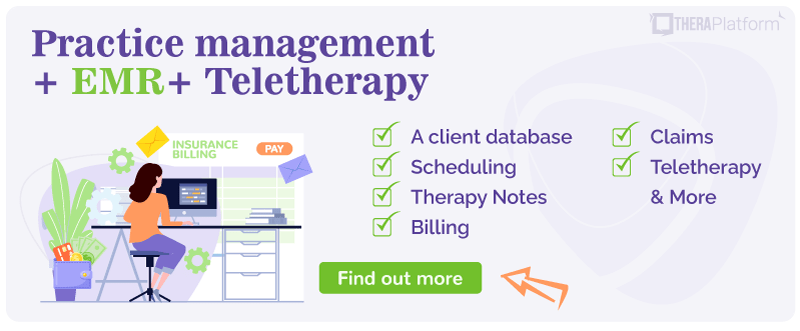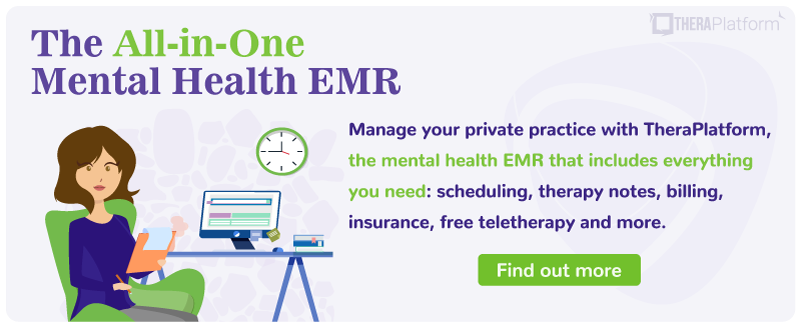ERP therapy

Exposure and Response Prevention (ERP) is a type of cognitive-behavioral therapy that utilizes basic principles of exposure therapy to break the bonds between obsessions and compulsions. Psychologist Victor Meyer pioneered the use of EPR in the 1960s, although it did not obtain its official name until years later. ERP has been a game-changer in the treatment of obsessive-compulsive disorder (OCD), becoming a front-line psychotherapy intervention. Here is what you need to know about ERP.
What is ERP therapy?
As its name suggests, ERP therapy has two main components, exposure and response prevention. These two interventions work together to break the chain that allows OCD to function. People who suffer from OCD have obsessions that they feel can only be reduced through compulsive behavior. These compulsions are inconvenient at best and debilitating at worst, depending on their severity. It is the job of ERP therapy to prove to clients that, in reality, their compulsive behavior is not necessary and their obsessions can be reduced just as well by not performing their compulsions.

For example, someone may believe that they are going to become extremely ill from being exposed to germs in their environment. As a result, they feel they must wash their hands numerous times (much more than is necessary) to prevent illness.
Using ERP therapy, the individual would be exposed to germs that would normally bring on the need for compulsive hand washing. But, instead of acting on those thoughts, they would prevent themselves (with therapist assistance) from washing their hands. After continued prevention of the compulsive behavior, the individual learns that the stimuli (e.g., germs) are not likely to cause illness even if they don’t perform the compulsion. This process is termed habituation.
It is important to note that ERP therapy doesn’t claim to completely eliminate a client’s distress. The goal, rather, is a reduction of obsessive thinking and compulsive behavior to manageable levels. Some people’s level of impairment is such that total amelioration of symptoms is not a realistic objective. The length of ERP therapy depends upon the severity of the case but, on average, ERP therapy will require around 12-16 weeks of treatment.
The steps of ERP therapy
Here are the steps a therapist is likely to follow when administering ERP therapy:
- Education. An essential part of ERP therapy is educating the client on how obsessions fuel compulsions and vice versa. Understanding the connection between the two gives the person hope that ERP therapy will be able to break the cycle that is bringing so much suffering to their lives and alerts them to the work they will need to do to feel better.
- Create an exposure hierarchy. Much like exposure therapy, the therapist must help the client create a scale of distressing situations. This will form the basis for the exposure work in the next step. For example, touching a doorknob in their house might cause a little discomfort (3/10) but touching a doorknob in a public place might bring on significant anxiety (8/10).
- Expose the client to the distressing stimuli. Using the exposure hierarchy, the therapist introduces the client to items in their hierarchy, from least to most distressing. This is called gradual escalation. Exposure can be performed with multiple techniques, depending on the situation. For instance, you can use imaginal exposure, in vivo exposure, interoceptive exposure, or even virtual reality.
- Response prevention. Response prevention is when the therapist helps the client halt their compulsive behavior. One technique for doing this is to delay the time it takes to initiate the compulsion. For instance, instead of washing hands immediately, the client waits a certain number of seconds before performing the ritual and keeps on extending the delay time.
Another technique is to modify the compulsive behavior. In this case, the individual performs a ritual that is similar to the compulsion but is slightly altered. For example, the client will wipe their hands with a paper towel rather than wash them numerous times. Both of these techniques cause the person to tolerate a certain amount of anxiety and teach them that their obsessions won’t become true when they refrain from acting out the particular ritual. At its most successful, response prevention involves no delays or alterations. Instead, the client refrains from compulsive behavior simply by being mindful and tolerating obsessive thoughts.
Start 30-day Free Trial and explore TheraPlatform. HIPAA Compliant Video and Practice Management Software for Therapists.
Is ERP therapy effective?
There is no doubt that EPR is effective in the treatment of OCD. In a comprehensive research review, EPR was found to reduce the symptoms of OCD in multiple studies with strong psychometric properties. Additionally, the American Psychological Association classifies ERP as an intervention with strong research support in the treatment of OCD.
The weakness of ERP therapy is that it can be very challenging for clients. Exposing someone with a moderate or severe case of OCD to difficult obsessions and trying to prevent compulsions is very difficult. Frankly, it is something that many clients want to avoid. As a result, a lot of people drop out of ERP therapy. Needless to say, you can’t get help if you aren’t in treatment.
Training resources for ERP therapy
ERP therapy does not lack training resources. They exist at every level, from intensive courses to workbooks. Here is a sampling of some of the best:
- The University of Pennsylvania hosts a three-day intensive ERP workshop on Zoom.
- The Behavior Therapy Training Institute (BTTI) provides three-day (or five-day, if held virtually) intensive training courses in ERP in different locations throughout the year.
- If you want a little less commitment, Becky Beaton-York, Ph.D. offers a digital webinar on using ERP for the treatment of OCD.
- From Edna Foa, one of the preeminent minds on ERP, comes a therapist guide and client workbook that every therapist can utilize in their practice.
- Finally, Justin Hughes, LPC. offers a one and a half hour training video on ERP
Exposure and response prevention therapy is the gold standard in the treatment of obsessive compulsive disorder. It uses behavioral interventions to destroy the link between obsessive thinking patterns and the compulsions that sustain them.

Resources
Theraplatform is an all-in-one EHR, practice management and teletherapy solution that allows you to focus more on patient care. With a 30-day free trial, you have the opportunity to experience Theraplatform for yourself with no credit card required. Cancel anytime. They also support different industries including mental and behavioral health therapists in group practices and solo practices.
More resources
- Therapy resources and worksheets
- Therapy private practice courses
- Ultimate teletherapy ebook
- The Ultimate Insurance Billing Guide for Therapists
- The Ultimate Guide to Starting a Private Therapy Practice
- Mental health credentialing
- Insurance billing 101
- Practice management tools
- Behavioral Health tools
Free video classes
- Free on-demand insurance billing for therapist course
- Free mini video lessons to enhance your private practice
- 9 Admin tasks to automate in your private practice
References
American Psychological Association. (2023, November 15). APA Dictionary of Psychology: habituation. https://dictionary.apa.org/habituation
Cleveland Clinic (n.d.) Exposure Therapy. https://my.clevelandclinic.org/health/treatments/25067-exposure-therapy
Foa, E. B., & McLean, C. P. (2016). The Efficacy of Exposure Therapy for Anxiety-Related Disorders and Its Underlying Mechanisms: The Case of OCD and PTSD. Annual review of clinical psychology, 12, 1–28. https://doi.org/10.1146/annurev-clinpsy-021815-093533
Hezel, D. M., & Simpson, H. B. (2019). Exposure and response prevention for obsessive-compulsive disorder: A review and new directions. Indian journal of psychiatry, 61(Suppl 1), S85–S92. https://doi.org/10.4103/psychiatry.IndianJPsychiatry_516_18
Law, C., & Boisseau, C. L. (2019). Exposure and Response Prevention in the Treatment of Obsessive-Compulsive Disorder: Current Perspectives. Psychology research and behavior management, 12, 1167–1174. https://doi.org/10.2147/PRBM.S211117



